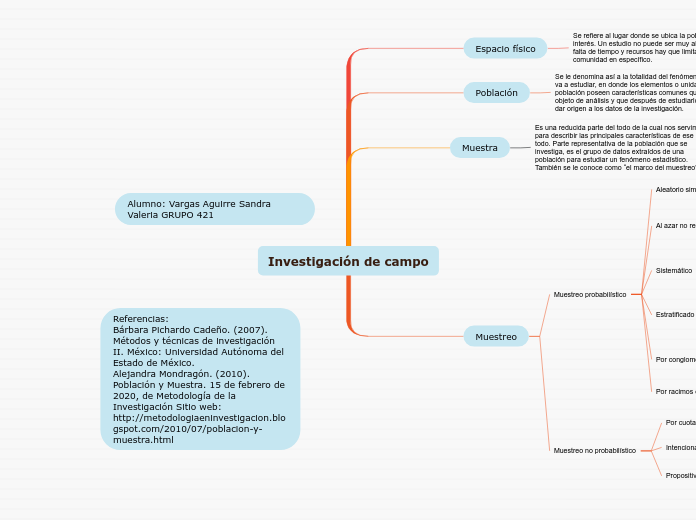jonka Valeria Vargas 4 vuotta sitten
2365
Investigación de campo

jonka Valeria Vargas 4 vuotta sitten
2365

Lisää tämän kaltaisia

To name your story, you have to think about the overall message and what you want your audience to understand from the story. Also, make it relevant and easy to remember.
The ending of a story is essential. We all know that if the ending is weak, what happened before loses its importance. So make it unpredictable, but fair. A resolved ending answers all the questions and ties up any loose threads from the plot.
This is the closure section of the story.
See examples of possible outcomes below:
Try answering these questions in order for you to come up with a closure:
- Have all problems been solved?
- Is it clear what happens with all your characters in the story?
- Has the challenged transformed your main character?
- How do the characters feel in the end?
Se emplea cuando no es necesario que la muestra realmente represente a toda la población y sólo se desea realizar un estudi en una población específica.
Consiste en escoger de la población aquellas unidades que pueden proporcionar información esencial.
Try answering these questions to come up with a closure:
- Have all the problems been solved?
- Is there a clear picture of what happens with each character in the story?
- Has the challenge transformed your main character?
- How do the characters feel in the end?
Procedimiento no aleatorio, en el cual la población se divide en sub-grupos con características comunes.
This is the moment when the main character surpasses the last obstacle and finally faces their greatest challenge.
The climax usually follows one of these patterns:
Type in your answer.
Durante este método, grandes grupos de la población seleccionada se dividen en subgrupos en varias etapas para simplificar la recolección de datos primarios.
Se obtiene estratificando primero el marco de muestreo y seleccionando después todos los elementos de algunos estratos (pero no todos son estratos).
En poblaciones de gran tamaño, se permite dividirla en estratos que son más fáciles de trabajar por su menor tamaño; cada estrato se muestra por separado. Son estratos de la población: la situación económica, la ocupación o especialidad de las personas, la edad, el sexo, la religión, etc.
Es la selección de unidades de muestreo de acuerdo con un número fijo establecido en una lista de la muestra.
En él, no sólo todos los miembros de la población tienen la misma probabilidad de ser seleccionados para la muestra, sino que después de haber seleccionado a un miembro, éste regresa a la población antes de que se haya designado otro; así cada miembro puede aparecer en la muestra más de una vez.
Da la posibilidad a cada individuo de ser seleccionado.
The middle of the story is where you add layers of complications that will lead to the end. Reveal more about the character's journey. Did their personality go through changes? How did they overcome the challenges? And as you build up the story’s central conflict, make it more personal to that character. Also, from the middle act, you have to lead into the final act.
Each story has a main character and that character usually needs to solve a problem or challenge. The character's challenge is the one that creates tension throughout the story.
In the beginning of the story (or the exposition), you will need to introduce the setting and characters. You might also want to introduce the main conflict. This part of the story is important because it gives the reader necessary background information and maybe even a first insight into a character’s personality.
Characters are essential to a good story. Usually, the protagonist(s) is/are the most affected by the plot. Introduce a character by focusing on their actions, interests, and occupation, as the physical appearance doesn't make a difference in most cases.